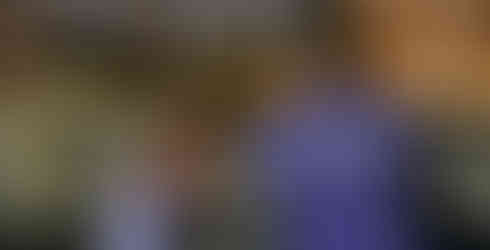
Who wouldn’t jump at the opportunity to see a Supermoon, and a Blue Supermoon at that, up close and personal? The crew at Union Station’s Arvin Gottlieb Planetarium offered just that last night.
I thought, wrongly, that Cutest would love to share the experience and at 10 PM we would love to stroll over to the viewing area and enjoy a summer’s night. Sadly, a book, a connvention, and a cozy couch won her over instead.
Undeterred, I flip-flopped my way over to Union Station’s garage and its roof top. There Patrick, the planetarium’s guru, warmly greeted me and quickly guided me to their telescope. This scope is no Toys-R-Us kit in a box. Approximately four foot long and ten inches in diameter, it is a serious piece of equipment. Little scopes protruded from the barrel here and there, all sitting on a tripod.
Patrick made a few adjustments which allowed the scope to track the celestial object. Remember when you fell asleep in your seventh grade science class and your teacher went on about earth rotation and stars and planet movements? This is what you missed. Squinting through a side scope, I came eyeball to crater and the moon. A golden hue blanketed the lunar landscape. Quite spectacular!
In total, only a dozen “fellow astronomers” joined me. But to top off the night, Patrick readjusted the scope to zero in on Saturn, the ringed planet. Being way out there in our solar system (about 809 million miles), Saturn appeared dime-sized and very pale. However, the image was extremely clear and sharp.
If you would like to observe future celestial events, wander over to the Arvid Gottlieb Planetarium. Review their website (https://planetarium.unionstation.org/) for upcoming indoor and outdoor activities, for young and the more mature. After editing my blog and seeing the slide show I’ve provided, I’m sure Cutest will want to go.
P.S. It occurs to me that you may not know exactly what a supermoon is. According to the Nasa website, supermoon is used to describe a full moon that occurs within a day or so of perigee (the point where the orbit of the moon or a satellite is nearest to the earth), so they happen three to four times a year. About 25 percent of all full moons are supermoons, but only 6 percent of full moons are blue moons (seasonal and monthly). This August’s rare blue supermoon appears bigger and brighter than most full moons as it lights up the sky through Wednesday, the first of four consecutive supermoons this year. So you still have time if you’re reading this Tuesday (or Wednesday) and the clouds dissipate. Or wait 'til 2037.













Comentarios